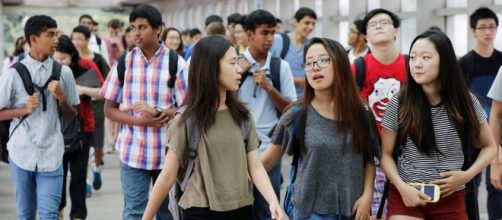It's 2017, and the United States is reaching levels of division unparalleled in the modern era. A large component of that division is the debate over race relations in our country, but for some reason, Asian-Americans are not being acknowledged in the discussion. While advocacy for representation and diversity in the media, political offices, and other fields swells, Asian-Americans are often cast aside in the discussion of race, but why?
The Model Minority Myth is the commonly held belief that Asian-American success in the United States proves that there cannot be a system of bias against minorities in this country – that the American dream is attainable for everyone.
That's a problem.
Debunking the myth?
While it's nice to believe that everyone has a fair shot at success, the model minority myth leads to structures of power (i.e. the government) to refuse the idea that there exists systemic bias against African-Americans and Latin Americans. Lawmakers are then empowered not only to prevent changes that can help reduce poverty in these communities, but also to attribute Asian-Americans' success to their upbringing. This not only erases the struggles of those who succeeded against the odds, but suggests that other minorities are poorly raised or less likely to succeed by their own nature or genetics, which emboldens racist ideologies. Thus, when Asian-Americans succeed, other minority groups are encouraged to believe that their jobs and college choices are being stolen by Asian-Americans, who already face the stigma of eternally being viewed as foreigners.
Not only does the model minority myth encourage racism against racial communities by pitting minorities against one another, it erases struggling Asian-Americans from existence in the United States. While many Asian-Americans immigrated to America with higher degrees of education to pursue the American dream, many communities immigrated out of necessity due to their countries' political or economic struggles. The Cambodian, Hmong, and Laotian people for example are three communities that experience alarmingly low rates of achieving a high school education despite being part of the model minority. These groups depend on, but have less access to government aid like welfare programs due to their status as Asian-Americans.
The first real step to change this systemic inequality is to rethink what we have assumed to be true of Asian-Americans.
Acknowledged in the discussion
When Asian-Americans are not only acknowledged in the discussion on race, but also included in fixing social issues facing our country, we will be able to progress toward reducing inequality, erasing injustice, and ensuring that our voices be heard.
It's easy to believe that the key to success is hard work, but that's only half of the story. The real task is to acknowledge our biases and to work to alter the way we perceive others. If we can speak up about seeing Asian-Americans on TV or reading stories that revolve around Asian-American characters, we'll begin to see more perspectives on the Asian-American experience and how the United States can change to support and protect all of its people.


